9 Years of Shadows - Switch Review
"An engaging, beautiful and well-balanced metroidvania"
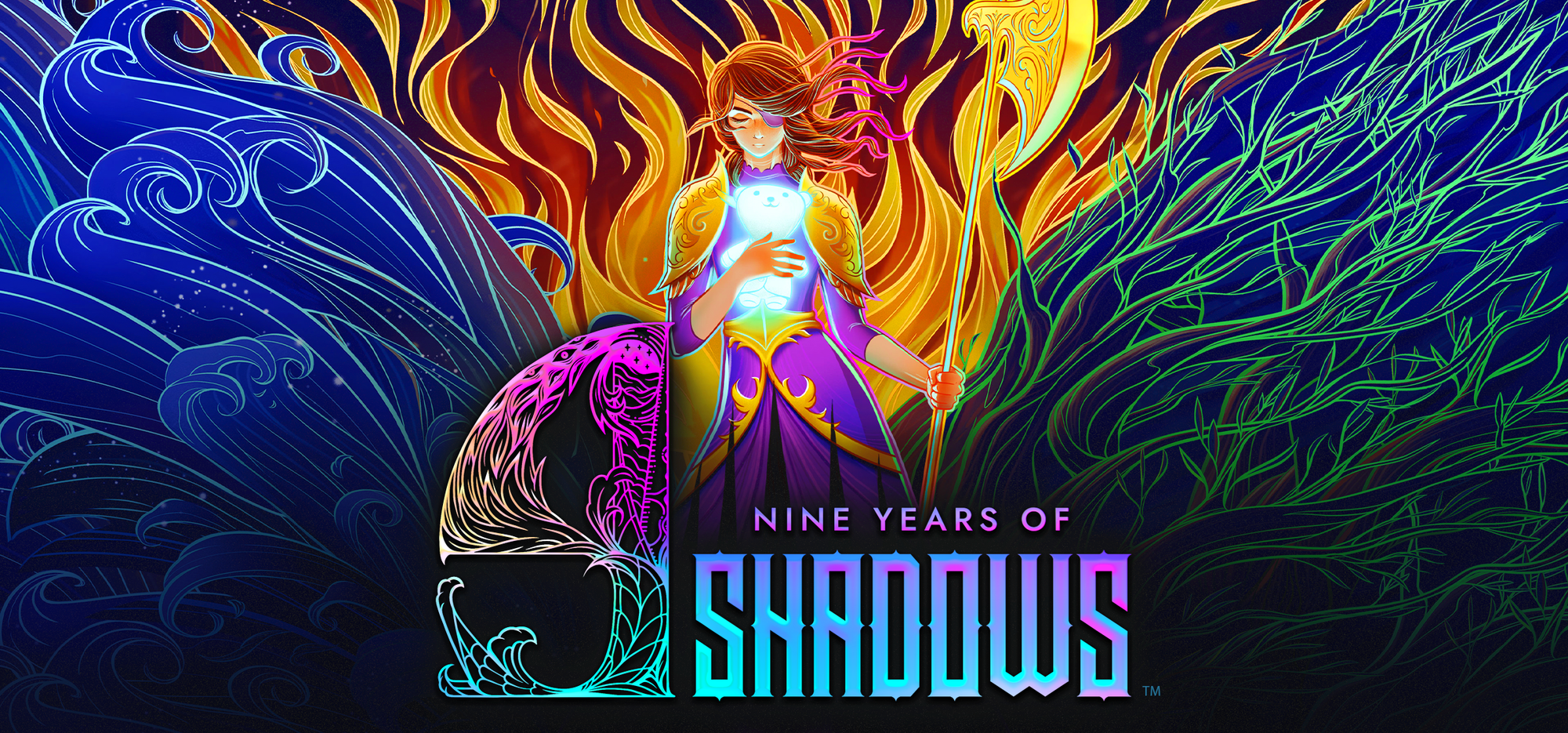
9 Years of Shadows is the debut title from Mexican developer Halberd Studios (more on them later). Yes, it’s another pixel art metroidvania, but since being released on Steam and other platforms over six months ago, it has certainly caught my eye with its bright colour palette and retro aesthetic.
In 9 Years of Shadows, you play as the main protagonist, Europa, as she explores the robotic castle of Talos. Talos has been overcome by a mysterious curse that has, as the name suggests, drained colour from Talos and its inhabitants for the last nine years. Much of the promotional artwork for 9 Years of Shadows features Europa and a cute little teddy bear. This presents a most intriguing juxtaposition; a game that looks like a dark, moody metroidvania but with a cute motif. I jumped into the world of Talos to find out what was going on!
The Good
As per any good metroidvania, Europa starts off with basically nothing but a small sword (or is it a halberd?) and the ability to jump. The first significant upgrade she encounters is that of Apino, a cute little floating teddy bear with magical powers! Yes, that little bear becomes pretty central in how the gameplay in 9 Years of Shadows pans out, especially in regards to its unique and original health system, which I’ll do my best to explain thusly! Effectively, you have a health metre (so far, so simple) but it drains either by taking damage (still simple) OR by using Apino as a projectile. However, when the health metre runs out, it doesn’t mean instant death; rather, you can give Apino a little cuddle and a quick lullaby plays, which regenerates the health metre up to a certain point (approximately 75%). You can also regenerate health by attacking enemies. By and large, it works pretty well but isn’t perfect (see The Bad section). I loved how it worked in boss fights, as it made you think strategically about when to use the lullaby ability during certain lulls in the wave of attacks. With some refinement, I’d welcome this system to other metroidvanias too!
Another point of note in 9 Years of Shadows is its soundtrack. It features a number of guest composers, acting like a Live Aid of 16/32-bit video game music! Specifically, Michiru Yamane (Castlevania) and Norihiko Hibino (Metal Gear Solid) have contributed; I know, right! And it really pays off. The soundtrack is epic. Whether it’s boss fights, save rooms, or even the main menu, you’ll be tapping your feet and humming along. It really does enhance the whole experience and shows the value of putting this much effort into the sound track. It seems quite a coup to get these composers onboard for such a new studio, but however they did it, you must applaud Halberd Studios!
9 Years of Shadows also looks gorgeous, in case it wasn’t obvious from any screenshots you’ve seen. I’m also pleased to announce it runs pretty smoothly on the Nintendo Switch, meaning Talos is a fun, beautiful and vibrant gameworld to explore.
TL;DR
- Innovative health system
- The soundtrack is epic!
- Looks lovely and plays lovely
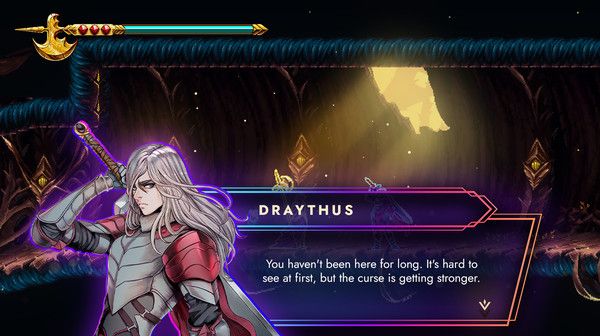
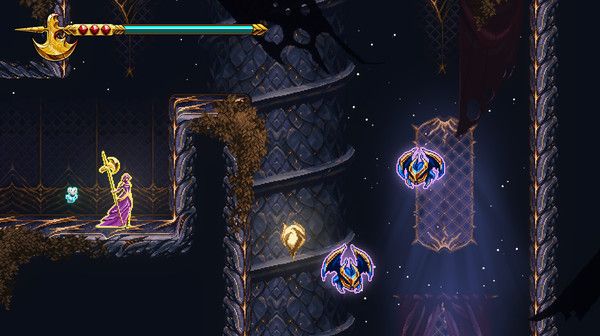
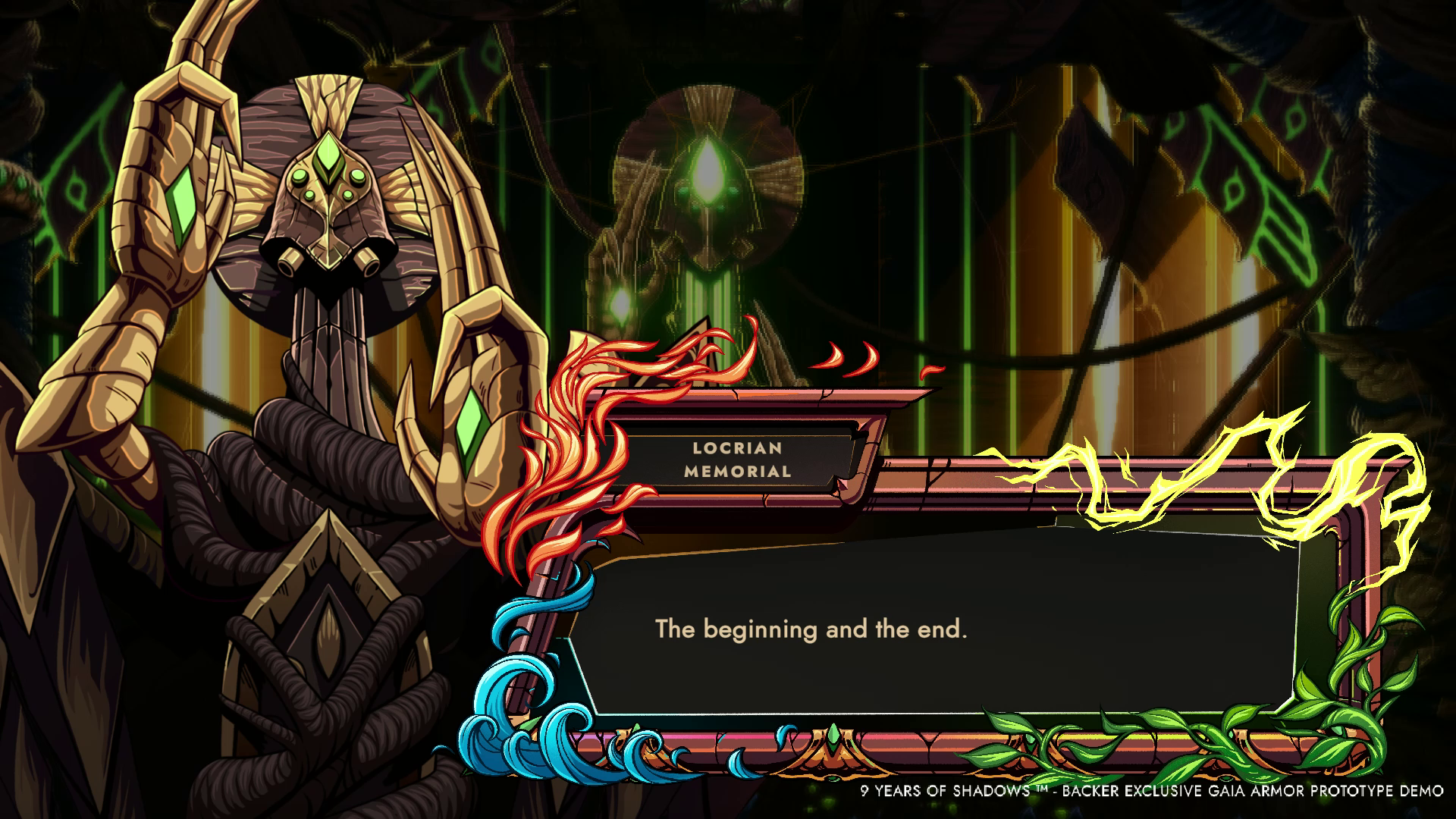
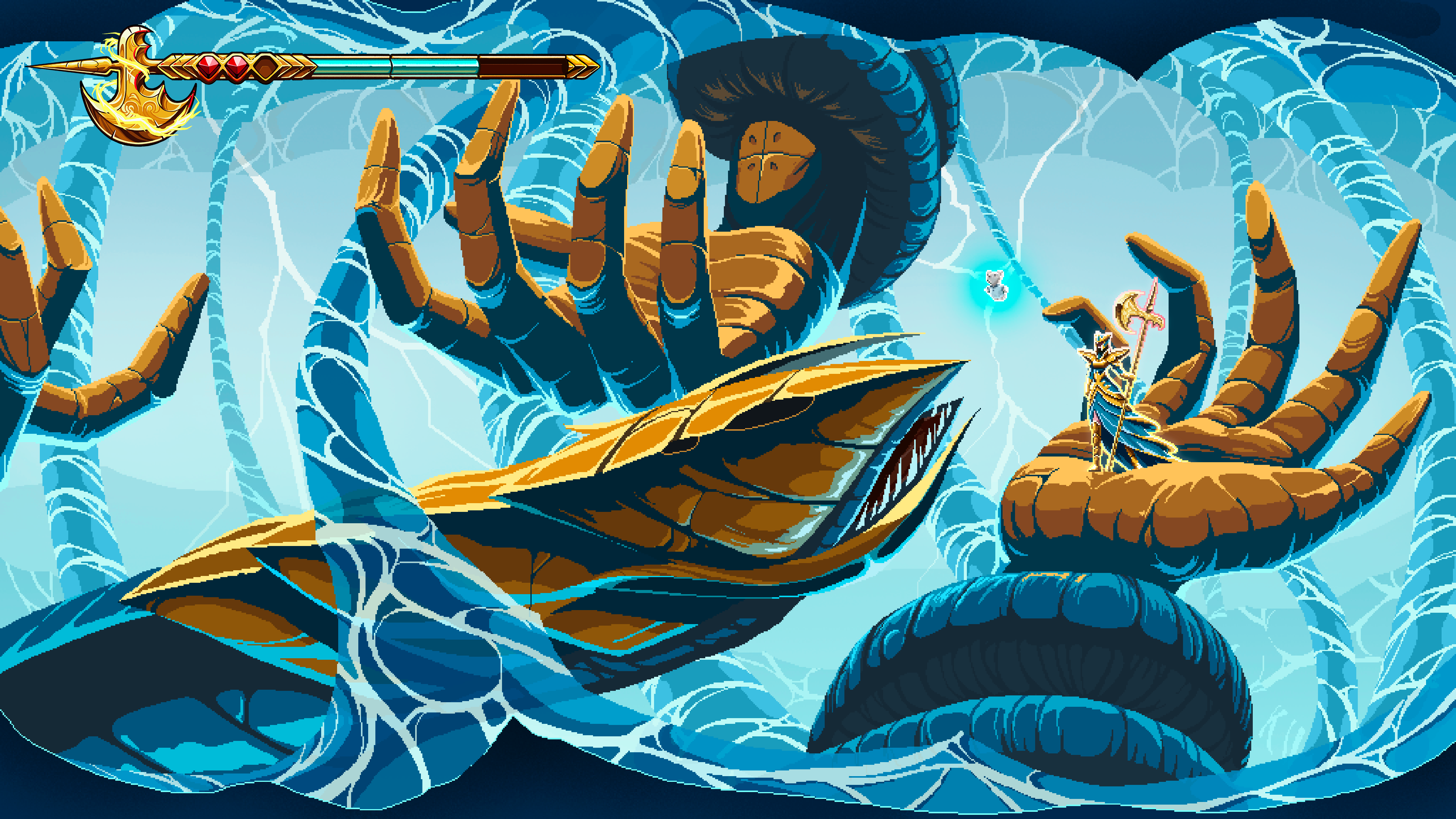
The Bad
A bit more on that health system in 9 Years of Shadows… Like I said under ‘The Good', it does broadly work, and it offers something different from competing titles. I also said how it made boss fights quite exciting. However, I did find that it removed most of the classic stress/peril you get when moving between save rooms or checkpoints in most metroidvanias. You know that feeling where you’re desperate to find the next save room to replenish your health because you’ve just had to battle your way through hordes of enemies when getting from A to B? It’s what makes action adventure games so exhilarating. However, in 9 Years of Shadows the lullaby system provides a safety blanket that mostly removes that feeling. I wouldn’t say it makes things easy, but it certainly makes them less dynamic.
The aforementioned guest composers also make cameos in 9 Years of Shadows as musicians who ask you to complete side quests. However, that brings me to my second negative point; the side quests on offer are sadly lacking and repetitive. We all love a side quest (well, I do) but the only ‘optional’ off-the-beaten-track tasks involve defeating mini bosses at the musicians’ behest. Don’t get me wrong; the fights themselves are pretty decent, but for me, it left the optional content feeling a bit shallow.
Lastly, and this isn’t a biggie, but the fast travel in 9 Years of Shadows is pretty limited. Metroidvanias often get lambasted for their backtracking, but a way to alleviate this issue is to provide a useful-but-not-too-hand-holding fast travel system. By that, I mean that, ideally, you want a system that cuts out the boring bits but also doesn’t remove the challenge. Well, save for an elevator that moves between a few central floors of the castle, there isn’t any fast travel at all. This meant some of the late-game backtracking was quite laborious.
TL;DR
- Health system makes some elements of 9 Years of Shadows too easy
- Lack of depth in side quests
- Frustratingly limited fast travel

Final Score: 8/10
Right at the start of the review, I promised more on Halberd Studios, and shortly before this review was published in November 2023, they announced their second title, Mariachi Legends. It’s currently going through a Kickstarter campaign and already has an excited following.
In case I didn’t make it clear, 9 Years of Shadows is an engaging, beautiful and well-balanced metroidvania and is up there with some of the best in the genre. If Mariachi Legends is half as good, we’ll be in for a treat!
Thank you for checking out our 9 Years of Shadows Switch review, thank you to Freedom Games (via Stride PR) for providing the review code and thank you to our Patreon Backers for their ongoing support:
- Andrew Caluzzi (Inca Studios / Camped Out)
- Bel Cubitt
- Jack Caven
- NintenVania Podcast
- RedHero

